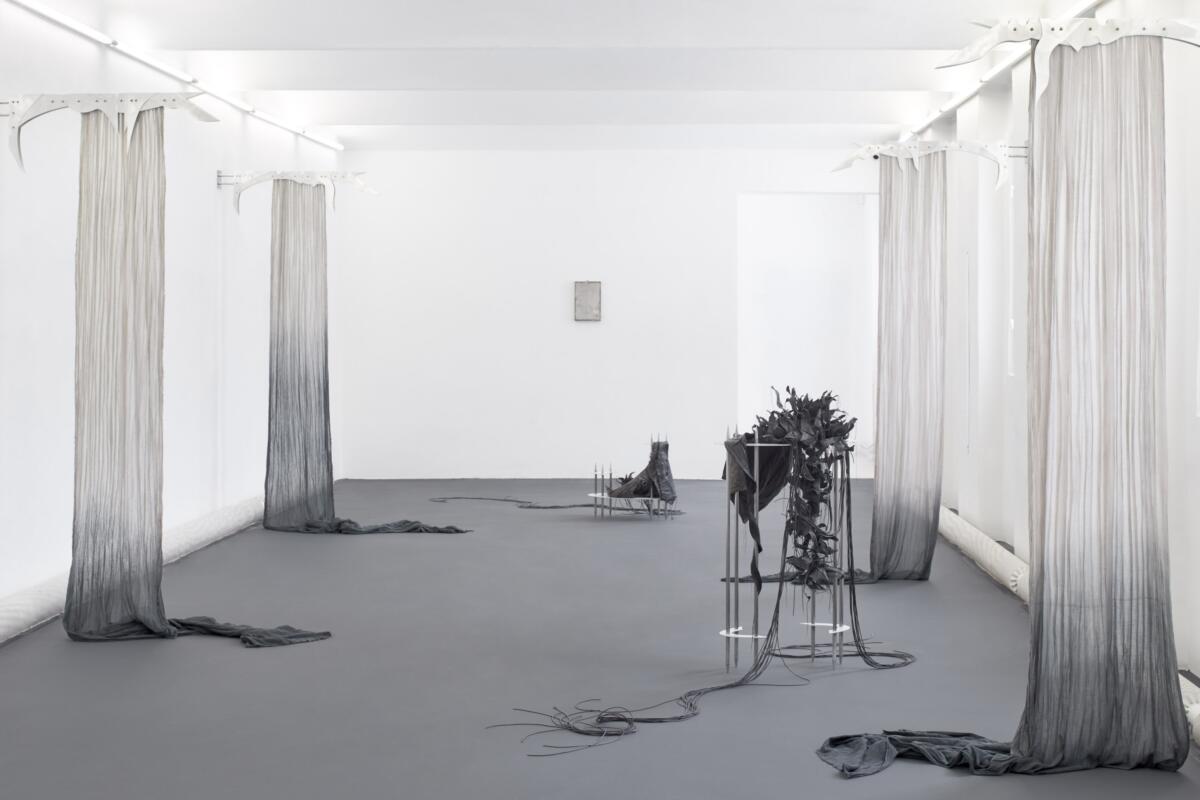
In recent months, the Inside Job duo – Michał Knychaus and Ula Lucińska – have been busy working on their exhibition titled And the door was kicked open again, held at Centre for Contemporary Art FUTURA in Prague, which forms a part of the overarching project Eastern Sugar (curated by Mira Keratová and Caroline Krzyszton). Lukas Hofmann zooms with the artists to discuss their reflections on this project, on practice in times of recurrent crises, their interweaving of materials, overlaps of physical and virtual realms, their work dynamic, and the importance of support structures.
***

Inside Job (Ula Lucińska & Michał Knychaus), ‘And the door was kicked open again’, exhibition view, photo: Tomáš Souček
Lukas Hofmann: Ula, Michal, thank you for chatting with me. Eastern Sugar stems from the history of sugar industries collapse in East-Central Europe and the repercussions of economic transformations. What are its traces in your project?
Michał Knychaus, Ula Lucińska: We treated it as a starting point that resulted in a more universal, metaphorical, and fictional outcome. In a more abstract sense, it relates mainly to transitional moments of time.
The exploration of topics like late-stage capitalism, neocolonial tendencies, speculation on time, and future prognosis brought us to the issue of permanent instability – the continuous play of consecutive collapses and reconstructions.
This heavily reminds me of The Three-Body Problem by Liu Cixin, which I’ve just started reading recently. In it, within an interface of a video game, scientists are trying to solve the problem of Three Suns moving irregularly and through their gravitational forces, heat, and the absence of it, causing eras of stability but also of absolutely unlivable chaos. This way the participants live in such permanent instability and the different societies they form have to deal with such contingency.
Yes, we think the way Caroline [Krzyszton] puts it is that the show is “an interpretation of the nature of History itself viewed as a cycle of irremediable and infinite repetitions, allowing hope to grow only from its mistakes, through individual stories of resistance and resilience”. Indeed, it is also a bit about the lost objects themselves (these inhabiting the modern ruins) and what their imagined “afterlife” could be. What happens when they escape from the human scope when they become actors freed from their roles of utility.
Our project pays attention to matter and its transfigurations, toward struggle between the human and non-human on the post-industrial ruins, toward the processes of building or rising from remnants. And we are all constantly surrounded by different kinds of collapses, aren’t we – local and global ‘catastrophes’ – so thinking about the possible “post-catastrophic world” becomes a necessity. Mark Fisher once wrote that the catastrophic crisis has a latent capacity to break the illusion of the Capital and may carry a strange hope for post-apocalyptic emancipation – and we can think of other crises in a similar way, although, of course, seeing their real causes, consequences, and damages does not contradict this.
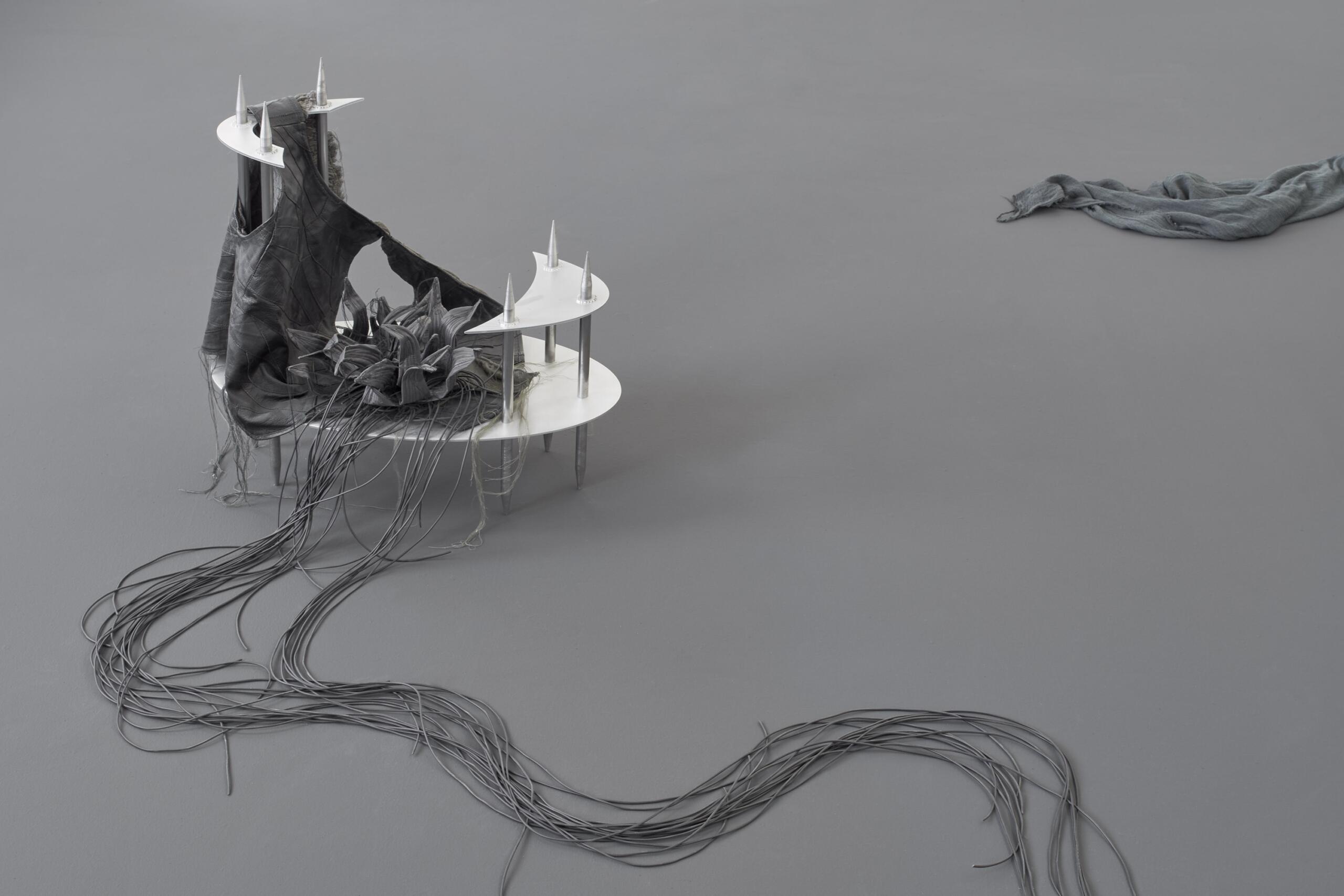
Inside Job (Ula Lucińska & Michał Knychaus), ‘And the door was kicked open again’, exhibition view, photo: Tomáš Souček
Right, looking at the works, one can’t help think of images of a post-catastrophic setting, in which natural elements slowly colonise landscape left-over from a previous civilisation. You seem to interweave both industrial and organic elements.
You are right – we often connect them. In fact, while choosing materials everything counts: from physical properties to symbolic connotations and customary use. Each material has its history, adaptability and renders other meanings. We especially like different kinds of metal (stainless steel and aluminum). Its industrial, almost surgical, and dehumanised character has made it a carrier for various themes. Throughout the time, metal was also strongly connected with a general idea of how the future will look like. Although the future is associated mainly with technological development, we are more close to the potential worlds that will include non-human agents, mutations, monstrosities, and other bizarre elements. That is why in most of our installations metal never appears alone, it is often accompanied by materials that introduce more organic attributes – like textiles, wood, or recycled leather. The use of materials in our works somehow resembles collage. By juxtaposing different elements – synthetic, technical, and organic – we try to release new feelings that will have a specific impact, firstly on us and later potentially on the viewers.
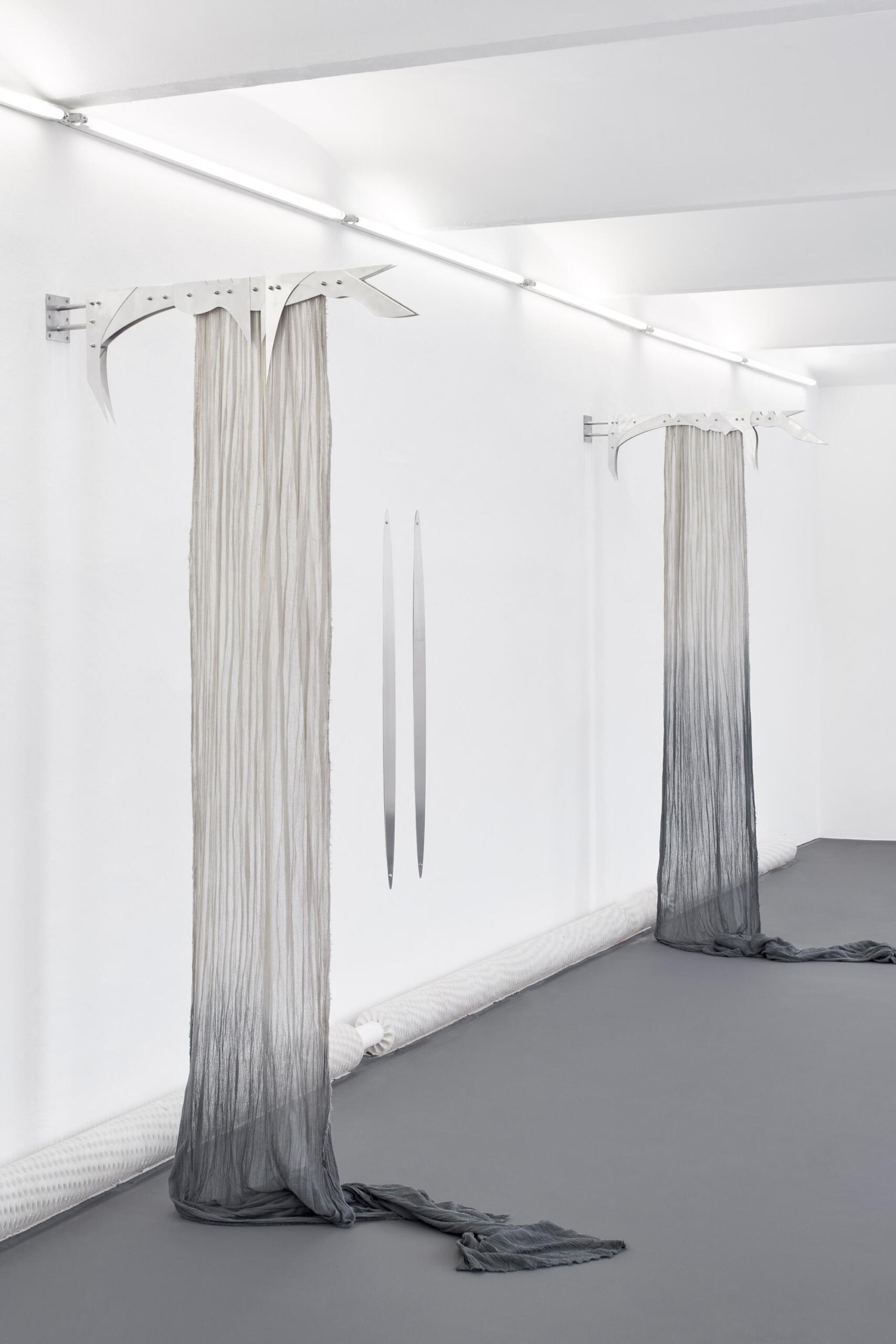
Inside Job (Ula Lucińska & Michał Knychaus), ‘And the door was kicked open again’, exhibition view, photo: Tomáš Souček
And you had ample time to contemplate these juxtapositions during your residency with A-I-R FUTURA in Prague, where you had the chance to source your material. How did Prague in lockdown imprint itself on the final project?
Besides working we were mainly roaming through the city, walking around its different neighbourhoods – taking pictures of architectural ornaments. We later treat it as a kind of visual database – an inspiration for current and future works. Prague is full of ornaments and amazing old architectural solutions (both are the result of an attitude toward the world, a specific way of thinking) – we mean mostly gothic but also modern, art nouveau. We often use such motifs in a perverse way – mixing elements from various periods, giving them a strong “technological” upgrade. It allows us to look at specific moments from the past as ones that can happen again, come back with a double force, not always as visual trends like ornaments and decorations, but e.g. ideas or philosophies.
Apart from that, you also had the chance to actually work in the space where the exhibition is now presented. That opportunity seldom happens, but because of lockdown and galleries being closed, your base was where the outcome would be...
… which largely influenced what the show looks like. The upper space of FUTURA is long and at the same time quite narrow, so we wanted to emphasise or even underline this “tunnel-like” atmosphere. We mainly did it by incorporating the repetitive sequence of the ceiling arches and thus create a feeling of continuity. It was interesting for us to find a form, an object that could stretch the space even further – so i.e. curtains can be expanded on an almost copy/paste basis. Together with the oval-shaped metal mirrors that appear on the walls, they pose as a metaphor for how we think about time and how different moments of ‘transformation’ occur within it, that they are sequences, patterns, sometimes harmful, sometimes enriching.
In some way, the project became hostage to the current health situation in Europe, and more specifically in the Czech republic. In other words, it hasn’t opened to an audience. As a curator, it demotivates me to work on something that no one then perceives physically, and we have been in this state now for months and months. The sad thing is we have to produce quantitative results, as we are a grant-based institution. We have to install the exhibitions, even if we can’t open them. All we can do is postpone a month or so, then a new project arises.
Certainly, the fact that the exhibition happens without the physical presence of the audience is simply sad. Until the very last moment, we were looking forward to the possibility of galleries reopening. It’s always a completely different experience – especially since the pandemic, everyone is fed up and just tired with visual impressions coming mostly or only from the screens.
For a while, we even had the feeling that the project is somehow incomplete as if there had never been the ‘finale’ needed in a psychological sense to finish the work, to close a certain stage that we’ve been working on.

Inside Job (Ula Lucińska & Michał Knychaus), ‘And the door was kicked open again’, exhibition view, photo: Tomáš Souček
This particular installation was conceived to be physically explored – so we focused on many details but also on a spatial feeling that cannot be captured by photos only. But sometimes we also make projects that are thought strictly for the virtual spaces, for example for GuestRooms or EPOCHGallery. Then our approach is different because we are aware from the beginning that the objects will be somehow mediated.
On the other hand, in a way, interestingly, the starting inspiration of the project was abandoned spaces, modern ruins, places devoid of human agency. In the case of “And the door was kicked open again” the same happens unintentionally – paradoxically even strengthening the initial idea.
What we are then left with as artists and curators is the impressions of the process and then documentation. Your exhibition has been particularly popular on flat-screen media, and in that sense, it is a nod to the virtualisation of art space.
This virtuality is inevitable, yet it does not diminish the importance of experiencing projects in physical spaces. In general, we perceive the virtualization of art during the pandemic, as the main way for the contact between artists and their audiences. The pandemic is not the only reason for the popularity of art on the Internet though, and once it ends, this trend will likely continue to grow. Nowadays, most exhibitions are viewed through a flat-screen, whether we like it or not. This incredibly expands the reach of projects, exhibitions, and institutions. By all means, virtualisation provides a possibility for creating new networks – sometimes more relevant, to what one is interested in. Because of these, the distribution of art on the Internet is necessary and essential. Of course, it is subject to many accusations for manipulation, capitalisation, or limitation of sensorial experience. But it could be always hacked, used creatively. And it helps promising and young artists to be heard and to emerge regardless of their starting conditions.
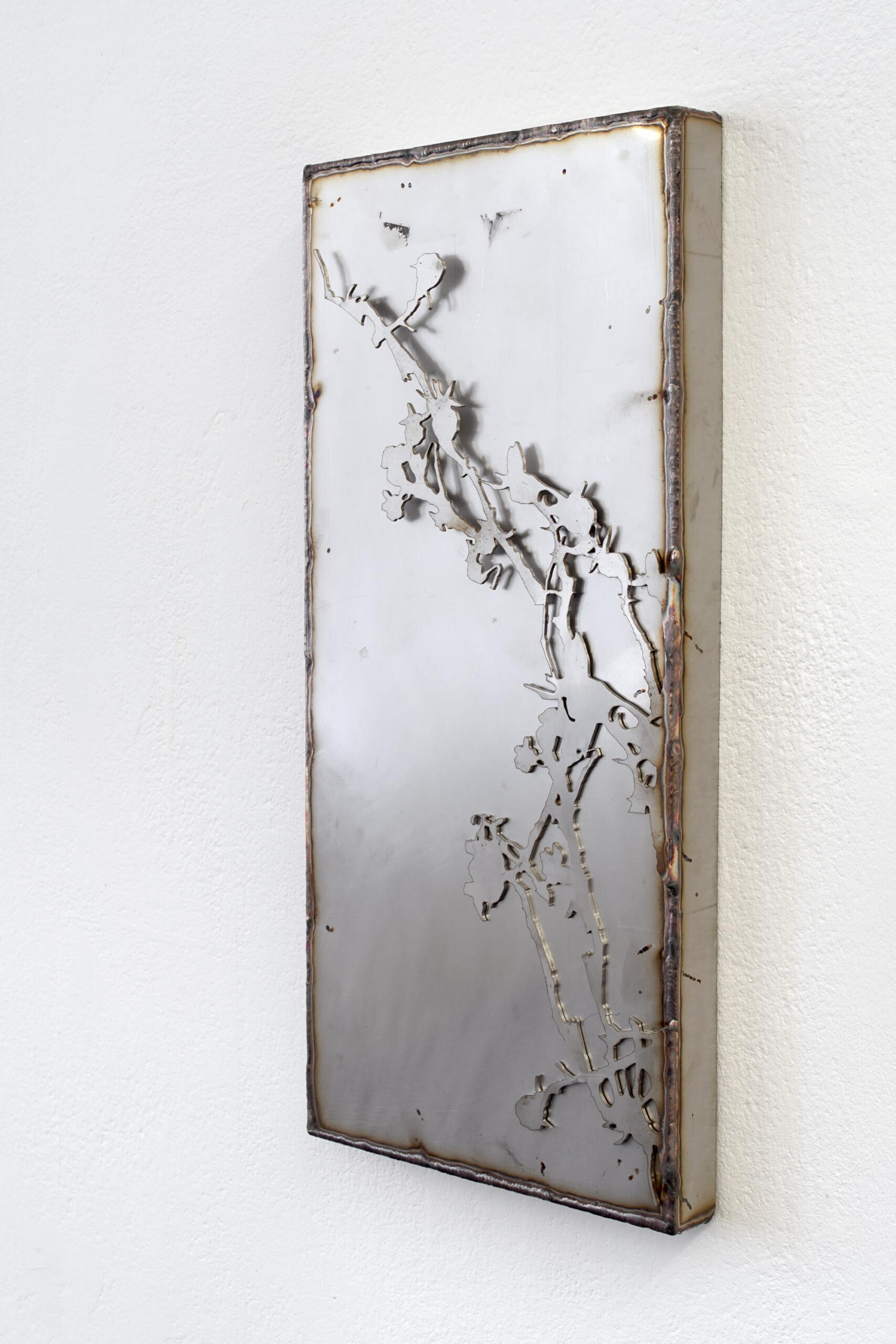
Inside Job (Ula Lucińska & Michał Knychaus), ‘And the door was kicked open again’, exhibition view, photo: Tomáš Souček
Surely, you can find your support network online. I think that especially in our precarious field, it is necessary to form such supportive bonds, ideally IRL.
But you also have to admit that these two fields overlap – it turns out that through online presence some common sensitivities can meet, and often as a result, the bonds might later develop IRL. And we agree – this aspect of meeting in person is crucial.
But the topic of support in the art field is quite complicated – surrounded by many hierarchical structures and randomness. We feel kind of lucky – because almost from the beginning we were receiving big support from much more experienced artists. Many times it was they who put us in contact with galleries, institutions, and cultural venues where we later realized our projects.
Lastly, there’s the support you provide to each other. You have been in a relationship for a long time. How do you juggle your individuality and work as a duo? I’ve always wondered how that feels like, in terms of agency and authorship.
In general, our approach is a result of synergy – something that could not exist outside of this arrangement or would be radically different. The longer we work together, the more we realize that what emerges as a result of the collaboration is what satisfies us both, individually, the most. This is the reason why we are probably not attracted to conduct single practices anymore. But we would also say that the elements appearing in our projects are linked to each of us separately. So besides the fact of co-authorship, every project is very personal.
We have been a couple for 10 years and we’ve been working with each other for quite a long time too, so certain frictions that you mentioned, have been worked through already. Still, in the beginning, we try to convince each other about the main features we want to focus on, but in the process, these energies are distributed in such a way that it would be hard to talk about an unequal division of labour, ideas, and intentions.
Of course, there is nothing strange in the fact that such questions arise, but on the other hand, it is an expression of the fact that art practice is very strongly perceived as a kind of competition. Working as a duo shaped the way we think about ‘individuality’ – it’s important, that’s obvious, but art always happens at the intersection of collective actions and undertakings.
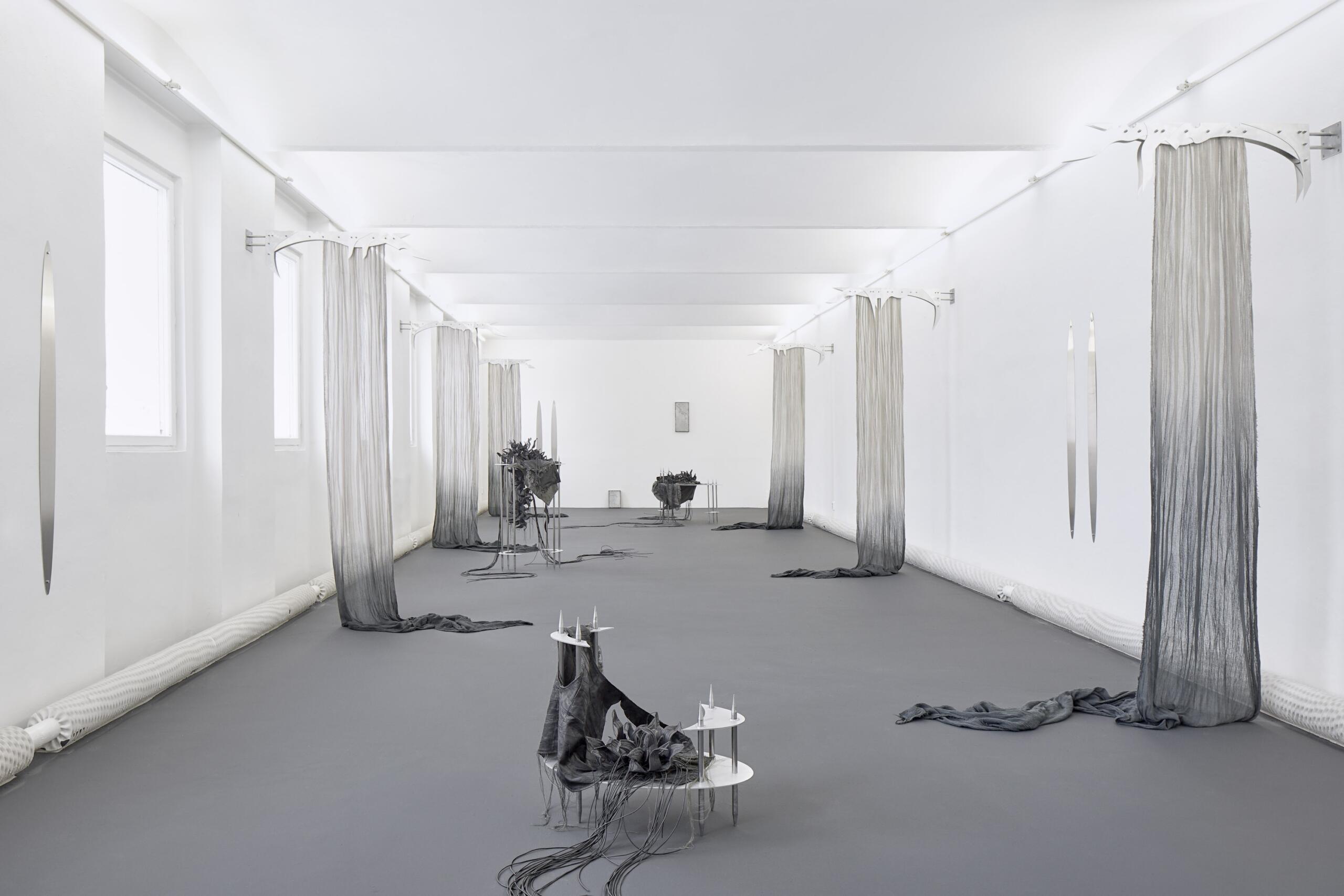
Inside Job (Ula Lucińska & Michał Knychaus), ‘And the door was kicked open again’, exhibition view, photo: Tomáš Souček
Art itself is a form of communication, both inwards and outwards. What motivates you to use its vocabulary?
It allows one to express something that one can’t explain it any other way.
The process of making art is a bit like creating fictional scenarios that help to expand imagination, and ultimately have the power to establish new symbols, to update language. And apart from all that, it just gives us a lot of satisfaction.
Imprint
| Artist | Inside Job (Ula Lucińska, Michał Knychaus) |
| Exhibition | And the door was kicked open again |
| Place / venue | Centre for Contemporary Art FUTURA, Prague, Czechia |
| Dates | 16 January – 30 April 2021 |
| Curated by | Mira Keratová, Caroline Krzyszton |
| Website | futuraprague.com |
| Index | Caroline Krzyszton Centre for Contemporary Art FUTURA Inside Job Lukas Hofmann Michał Knychaus Mira Keratová Ula Lucińska |
